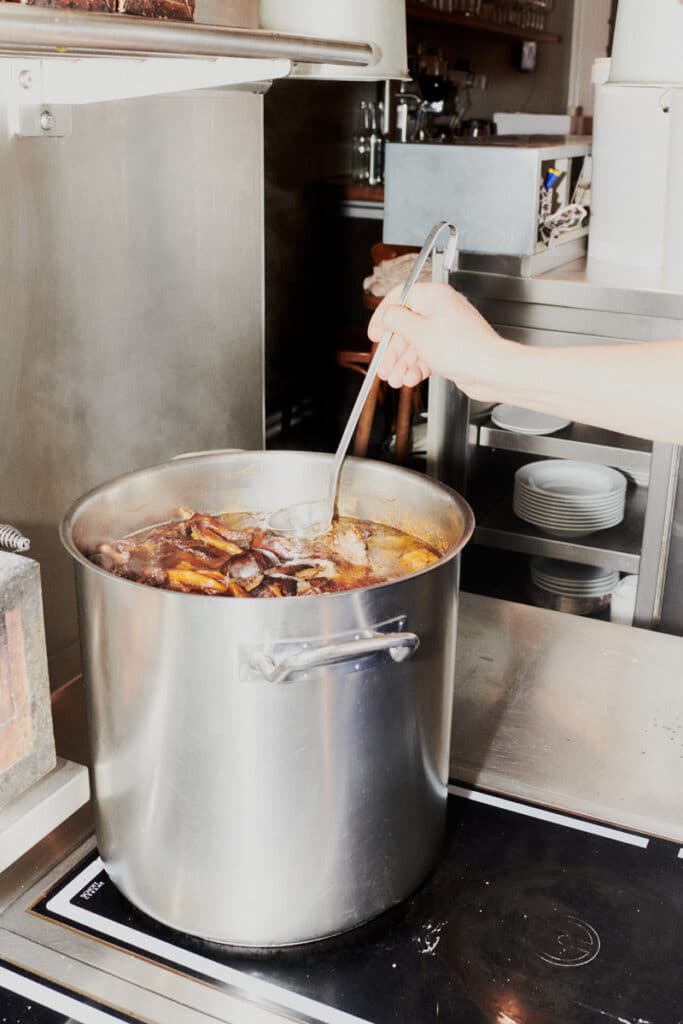I speak to Vadim Otto Ursus while he’s in a car, cruising around Austria. We have been trying to set a date for our conversation for a few days, and we finally manage to find a time that suits us both while he’s being driven through what I imagine is a dramatically autumnal central European landscape of golden trees, sharp mountains, and misty air (even if, potentially, he is just navigating an unremarkably grey autobahn). It’s just that, when one thinks of Vadim the chef, it is hard to forgo the image of him as someone perennially rooted in nature, in the present time and place. That’s what the menu at Otto, the restaurant in Berlin he opened at the tender age of 25, promises—and delivers: seasonal dishes made with hyperlocal produce of the best quality, foraged, grown, or purchased from a network of small, organic farmers in the German region of Brandenburg. Quality food, quality wine, quality time. It works. So much so that it is one of the most reputable restaurants in the city, and getting a reservation requires patience and perseverance. Think of that success alongside other highlights from Vadim’s career, like working in the kitchens of René Redzepi, Maaemo, or Koks, or opening a second restaurant—Trio—by the time he was 30, and it’s easy to be dazzled by the headlines, to imagine a life of rowdy kitchens and endless shifts bathed in the excesses of fame. Yet it only takes a few minutes on the phone to sense that he is someone as rooted and down to earth as the food he makes, radically far from that recurring cliché of the larger-than-life chef. Vadim lives with his girlfriend and son in a tiny apartment in the same building where he grew up, a place with no frills. It’s a stone’s throw away from his restaurants, right next to both of his parents’ places. He moves between work and home, with occasional excursions to the cabin his mother bought in Brandenburg some years back, which fortuitously became the cradle of Otto. There is beauty in this sense of familiarity, in the elevation of the elemental things that surround us and the respect for the limitations that they inevitably imply.
This website uses cookies so that we can provide you with the best user experience possible. Cookie information is stored in your browser and performs functions such as recognising you when you return to our website and helping our team to understand which sections of the website you find most interesting and useful.


















 close
close






